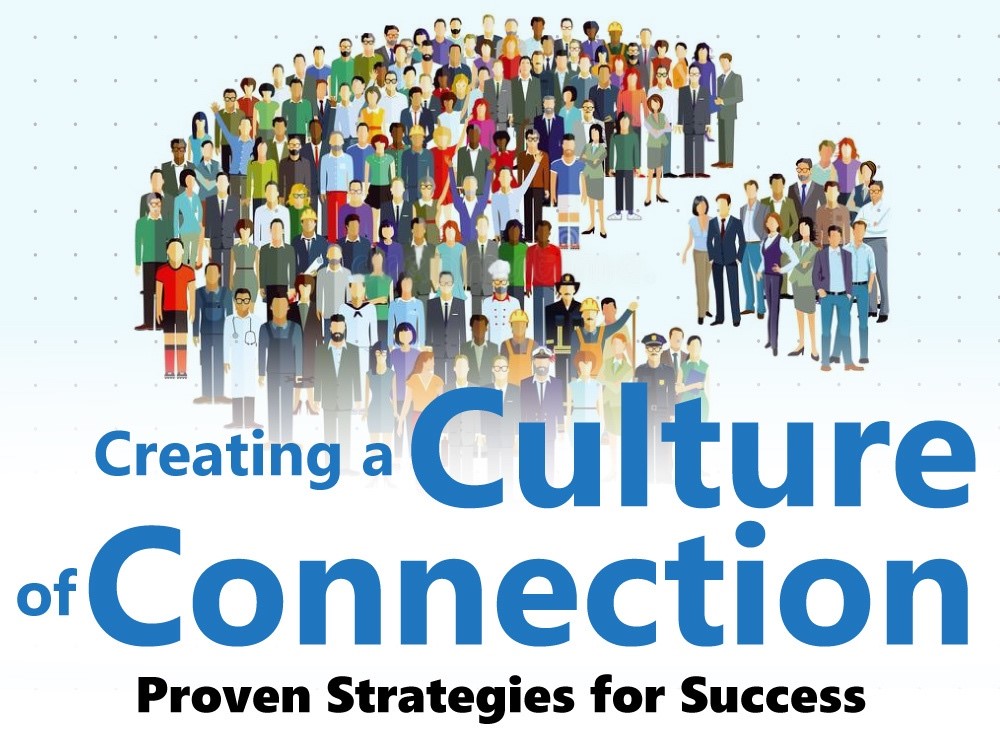This health system newsletter is a summary of Catalyst Learning’s webinar entitled “Creating a Culture of Connection: Proven Strategies for Success.” To watch the webinar, click here.
The 2022 workplace is being reshaped with a lens toward how the employer-employee relationship is changing. Workers are questioning their career choices, and employers are asking themselves what is needed to improve retention and how they can better serve the needs of associates. HR leaders in healthcare are looking at how their people experience community, communication, work appreciation and connection to company values.
One way to more strongly meet employee needs is to create a culture of connection. The BlueBoard organization recently released it’s The State of Workplace Connection Report 2022 and found that employee connection is key to driving critical outcomes in employee happiness, retention, and engagement.
The State of Workplace Connection Report 2022 recognized these as the top ways organizations are working to improve employee connection:
- Hybrid in-person and online events
- Formal employee appreciation and recognition
- Adding tech for better remote communication and collaboration
- Manager and leadership training
- Expanding employee learning and development opportunities
How can organizations start creating connections on Day 1? Culture-based Onboarding.
Jacque Burandt, President of Award-Winning Results and former Chief Learning Officer at University Health in San Antonio outlined how a poor onboarding experience can be very costly to employers. According to OC Tanner data, 69% of employees with great onboarding stay 3+ years. The Gallup organization connects onboarding to safety, citing a study of 200 hospitals in which engaged nurses are the #1 correlation to decreased mortality.
To connect onboarding to culture, Burandt recommends including the strategic plan and talking about vision and values in active, engaging ways that provide maximum opportunity for interaction. Involving senior leadership, either in person or virtually is vital. So are providing an understanding of the patient experience model and recent survey results. Onboarding also provides opportunities to help new employees connect from day one and establish individual relationships across the enterprise.
To learn more about health system onboarding and creating a great first impression for the Culture of Connection, read more of Burandt’s wisdom in the ATD Talent Development and Training in Healthcare Handbook, Chapter 11, Onboarding.
Increasing connections with nursing and non-clinical team members at East Alabama Health (EAH)
Susan Johnston, VP HR at East Alabama Health, shared her perspective that the Great Resignation goes beyond the employee/employer connection with a poignant story about two experienced nurses who had recently resigned because their “work family” had left her organization.
Johnston shared 3 strategies that are a focus for retaining employees:
- Boosting flexibility with multiple staffing models
- Increasing connections with nursing workforce to understand issues.
- Recruiting a strong entry level workforce and upskilling them to fill future needs
To focus on nursing staffing and workload, EAH does daily reviews at the senior level of unit staffing to ensure ratios are met. It created a Nursing Supervisor position during the pandemic to give more support to unit managers and is exploring alternative staffing models to assist with more “hands on deck”. New roles for LPNs, admission/discharge nurses, interns and medication assistants are either being explored or have been implemented to support the primary nurse role.
The Nursing Advisory Council plays a key role in building connection between leadership and staff nurses to communicate, inform, and build trust; emphasizing transparency and consistency. Staff serve a two-year term and are compensated for participation. And charge nurse management training continues to provide an important benefit to nursing staff, ensuring there are trained leaders on the floor.
Like many healthcare systems, EAH is a vital employment anchor in its geographic communities. Embedded in its culture is a commitment to recruiting strong entry-level workers from the community and upskilling them. EAH creates career paths through a salary structure that encourages staff to achieve certifications and new skills. School at Work (SAW)® helps with career development and 53% of SAW graduates have been promoted within the organization. EAH created pipelines for entry-level staff to become nurses, respiratory therapists, and other allied health professions. EAH’s scholarship program for SAW graduates pays for all community college pre-requisite courses.
To promote a culture of connection, and an environment where employees feel supported and heard, EAH keeps a pulse on changing employee needs and expectations within HR and across senior leadership. It keeps the CFO informed of the cost of turnover, because investment in staff is very small when compared to turnover cost and low engagement. Senior staff helps employees to see internal opportunities which are available to career build and creates two-way communication so staff know they are supported, recognized and heard.
—-
Next Steps
To explore how front-line employee learning, from support positions to charge nurses, can increase your culture of connection, contact Catalyst Learning at info@catalystlearning.com
To learn more about creating a culture of connection, click here for the webinar slides and recording.
To support professionals in your healthcare HR and Learning organization with their own professional development, consider the ATD Talent Development and Training in Healthcare Handbook
